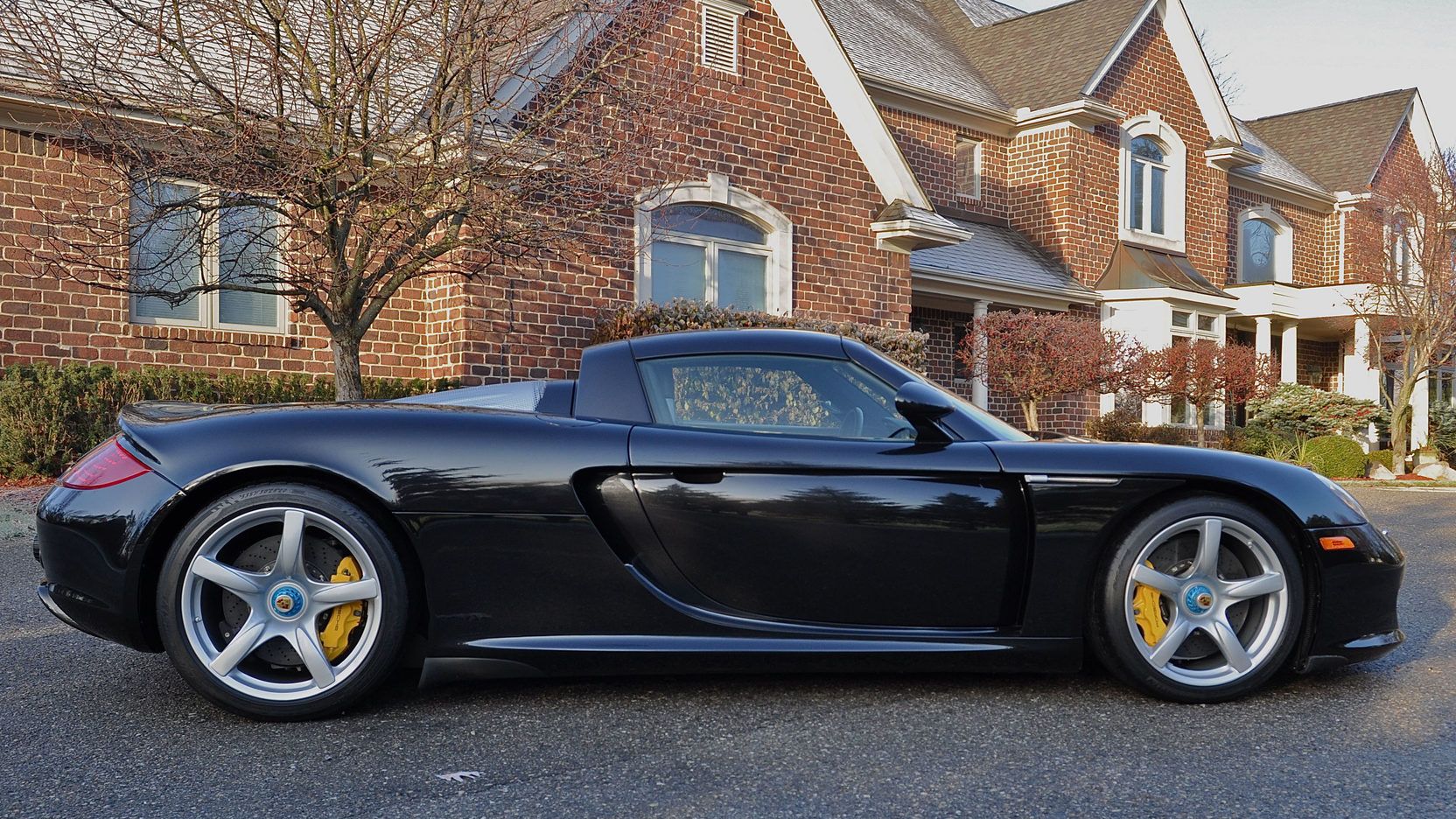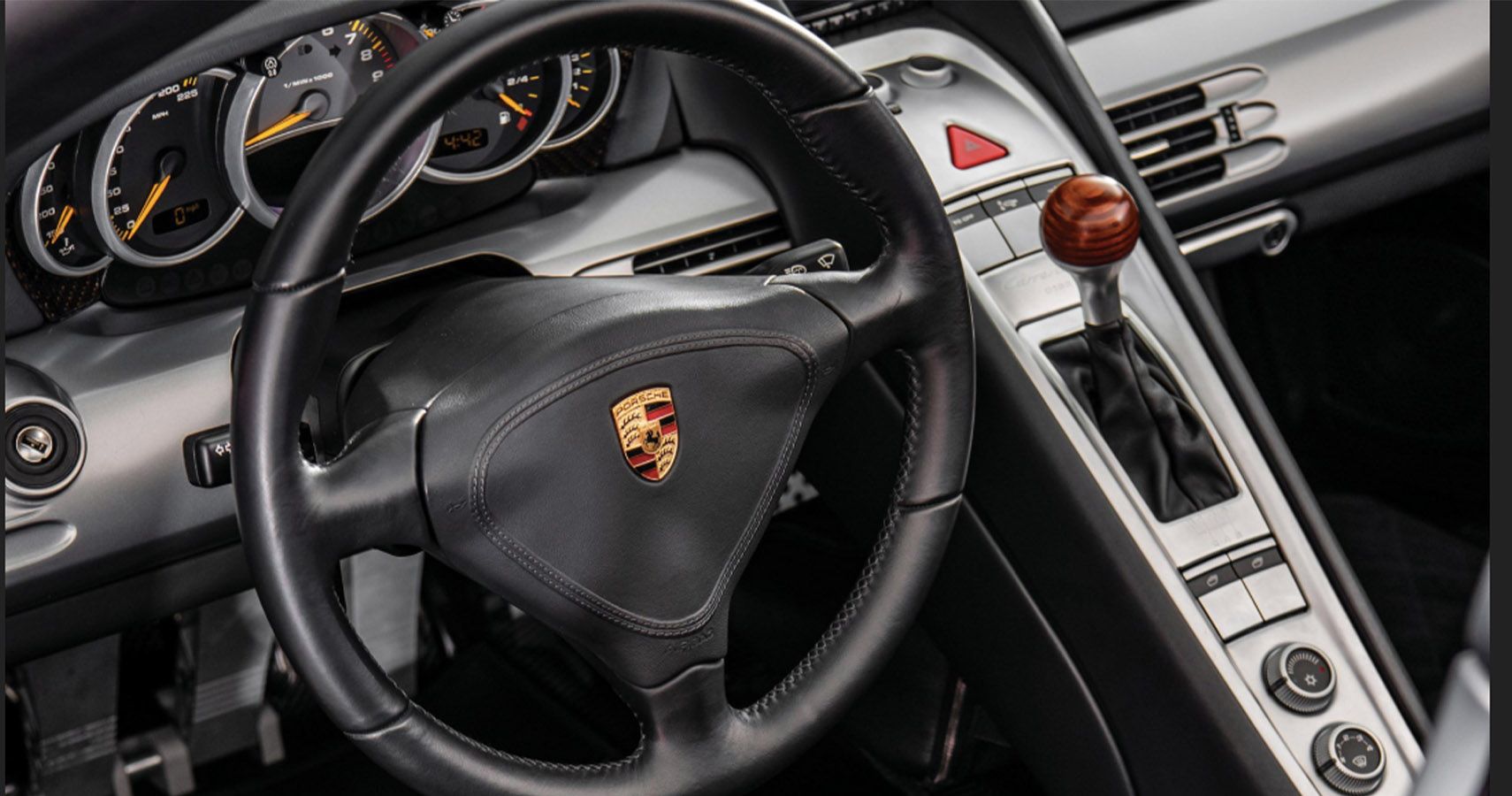One of the iconic Porsches ever to grace the tarmac was the 911. Through its various generations, the Porsche 911 has given the brand enough recognition and revenue over the years. Their GT division has been a core part of the brand and led to many cars including the recently introduced 911 GT3.
Porsche is well-known for building some of the best drivers’ cars out there. Mclaren comes close and so does Lotus, but both of them have been known for questionable reliability. Porsches, on the other hand, are good in terms of both performance and reliability. With interest in motorsports alive and well, Porsche was very active in pushing the limits and refining what’s already great.
One such act led to possibly the best supercar experience ever created— the Porsche Carrera GT. Here’s how it’s a dangerous prospect in the hands of mere mortals and a true driving gem if you know what you’re doing.
Porsche Carrera GT: The Story Of Its Existence
If you didn’t know, the Carrera GT is a 2 seater roadster that was widely regarded as one of the gnarliest yet most engaging sports cars of the early 2000s. The Carrera GT’s story starts with the FIA changing the rules of GT1 and LMP1 cars. With the existing designs scrapped, Porsche had a new prototype in the books and decided to house a V10 inside of it. The engine in question was secretly developed by Porsche for the Footwork Formula One team. However, the engine was shelved due to unforeseen circumstances. Later, Porsche decided to shove this engine in their new prototype.
However, shortly after testing started VW insisted Porsche scrap the idea and focus on the Cayenne SUV. However, Porsche decided to discreetly work on the project by using the V10 in a concept called the Carrera GT intended for the Paris Motor Show. A good amount of attention paired with a lot of interest in the product led to Porsche deciding to go ahead with the Carrera GT. Also, the Cayenne played an important role in the Carrera GT’s fruition as a lot of revenue was generated with the success of Porsche’s SUV allowing for extensive R&D.
Porsche started a production run of the Carrera GT in 2004 with 1500 projected examples. However, citing a change in airbag regulations in the US, Porsche decided to stop production in 2005 with 1,270 units being manufactured. Out of which 644 found their way to the United States.
Porsche Carrera GT: The Ultimate Supercar Experience
The Carrera GT is iconic for its use of the race-inspired 5.7-liter V10 (slightly upsized from the prototype unit). The engine itself is a marvel that shrieks with a distinctive pitch that is nothing short of intoxicating. The unit brought along a lot of innovations including dry-sump lubrication, titanium connecting rods, and flexible engine mounts. While these were common to race cars, production cars seldom saw these. The engine mounts help keep the vibration at a minimum and the use of titanium piston rods helps with less inertial forces allowing the engine to rev freely. The Porsche Carrera GT manages 605 horsepower and 435 lb-ft of torque.
It takes 3.5 seconds for the Carrera GT to reach 60 mph and thanks to its dynamics, it was the most engaging of cars. The dry-sump lubrication helped engineers mount the engine lower. The crankshaft of the Carrera GT is just 3.9 inches away from the underbody. This helped with a lower center of gravity and supplemented the Carrera GT’s astonishing handling abilities.
The Carrera GT comes with a good ol' six-speed manual. Unlike many of its competitors back in the day, the Porsche employed a proper manual with a traditional clutch (infamous for its tricky 1st gear). The clutch itself is a lot smaller, to put that into perspective, the Carrera GT’s unit is about two-thirds the diameter (6.7 inches) of a standard Porsche 911 clutch. The GT’s clutch has four friction discs as opposed to a regular clutch. The engine is so responsive that, there is zero inertia thanks in part to the lightweight ceramic clutch and a flywheel-less design. Yes, the Carrera GT does not have a traditional dual-mass flywheel.
Porsche Carrera GT: It’s Not Dummy-proof
Another important aspect that makes the Carrera GT a handful to drive is its lack of driver-assistive tech. There is no stability control in the Carrera GT. It was a car that demanded every inch of dedication from the driver. If you make a mistake, you’ll likely pay for it, in some cases literally. Also, the Carrera GT was a car meant for a niche audience since it’s sparsely equipped in terms of Bluetooth and other creature comforts. The extreme abilities of the car can be only be exploited if you know what you’re doing. Even someone as experienced as Jay Leno had an incident where he spun off the track and luckily left the scene unscathed. Safe to say, if you know what you’re doing, chance are you’ll have an experience unlike any other. If not, you’ll be part of one of the most expensive supercar crashes in history.
Sources: Porsche, YouTube, Evo






